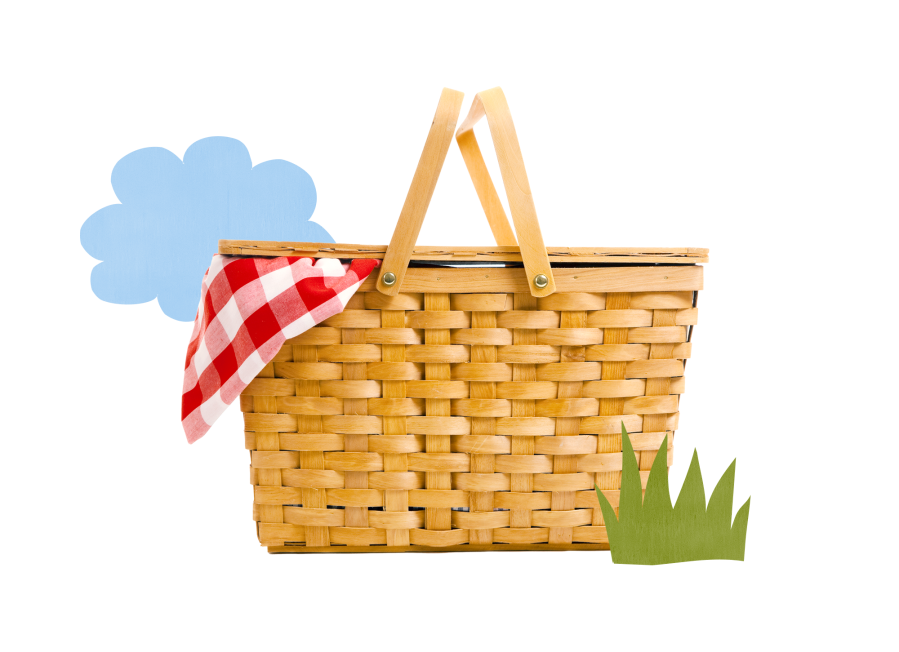
The vision
I cycle down to the neighborhood store — mama forgot a tomato.
I loop down streets so wide you used to see rows of cars on either side, well before the rEVolution. Things are slow to change here, but last spring, my neighbors and I convinced the city council to add us a stop on the BRT. At least it’s something.
Bright, beautiful home gardens — no longer forbidden by archaic HOA rules — blossom in the late summer sun. Our crop had a tough start to the season this year, too much rain.
I wonder whose tomato I’m going to purchase tonight?
— a drabble by Looking Forward Reader Bethany N. Bella

The spotlight
I recently returned from a trip out of town to find that my little patio garden had perished in the heat. I took up gardening, as many did, during the spring and summer of 2020. Although I’ve never produced enough to put more than the tiniest of dents in my grocery list, growing some of my own food has taught me a lot about how to waste less, and how to build my eating around what’s in season — along with some cool facts about plant biology.
Fortunately for me and my now-fried plants, gardening is far from the only way to shake up our food habits for the good of our mental, physical, and planetary health. For this week’s newsletter, I went looking through the Fix archive for some other ways to bring a little eco-friendly intrigue to my (and your!) summer picnic basket. Check out some of these ideas, and be sure to let me know if you try any of them!
(P.S. Stay tuned for Fix’s next big exploration, coming in September. It’s all about what we eat and how our food systems can adapt to a changing climate.)


1. Forage for a salad. Foraging, the age-old practice of gathering edible plants and fungi from your immediate environment, has also seen something of a resurgence in recent years. It’s been popularized on social media by people like Alexis Nikole Nelson (aka BlackForager), who has a combined total of around 5 million followers on TikTok and Instagram. Nelson and other advocates highlight foraging as not only a free way to bring some local, seasonal produce into your diet, but also a way of regaining and preserving knowledge about our biological landscapes. Nelson goes so far as to call it a revolutionary practice, especially for people of color who have historically been denied access to land and self-sufficiency.
In this feature from Fix’s Outdoors Issue, writer Greta Moran explores the benefits of foraging and shares some tips on how to get started, from expert forager and New York City dweller Journei Bimwala. “It’s not just the ability to recognize a plant, identify it, and take it,” Bimwala says. “You actually have to build a relationship with your environment.” Building that understanding and awareness takes time, but for Bimwala the rewards are well worth the effort. Some of her favorites from the “edible margins” of NYC are chickweed, cleavers, and elderberries. Read the full piece here.

2. Try some alternative proteins. Like, really alternative. Plant-based meat has gone way beyond the world of burgers and nuggets. Whether you’re a longtime vegetarian or just a little bit plant-curious, you can find imitation versions of some surprising products — like seafood.
In this food diary, Fix contributor Adrienne Day reviews vegan renditions of shrimp scampi, fish and chips, lox, caviar, tuna, and crab cakes. Although seafood has lagged behind faux beef, chicken, and pork, a number of new companies are bringing briny tastes and omega-3 content to the vegan market. You might just have to get past some slightly uncanny appearances — in describing a package of vegan shrimp, Day writes: “These facsimiles, made with modified starch, pea protein, and glucomannan (a dietary fiber derived from the konjac root), had an oddly rough texture and resembled nothing so much as a baker’s dozen of severed fingers.” Check out the complete reviews here.

3. Wash it all down with a sustainable brew. Another food group that’s been somewhat slow to add green options to its aisle is … booze. You’ll be hard pressed to find labels touting sustainability at the liquor store, entrepreneur Emily Darchuk told me last year — whereas they’ve become common on many other household products, from snacks to sponges. “Why do people care about something they spend two or three dollars on,” Darchuk wondered, “but not about something they’re spending $30, $40, or $50 on?”
She sees a greener future for beer, wine, and spirits. Her company, Wheyward Spirit, makes a specialty liquor out of excess whey from dairy producers (which landed her on our 2021 Grist 50 list). Whey is a byproduct of cheesemaking — 9 pounds of the protein-rich stuff get left behind for every pound of cheese produced. Darchuk saw an opportunity to ferment it, solving a waste stream and cracking open a new niche in the world of sustainable booze.
She’s not the only pioneer trying to help us all drink responsibly. In this feature, along with whey-based liquor, I explore beer made from perennial grains, and even snacks made out of “spent” grain from breweries. Read the full piece here (21+ to party).
— Claire Elise Thompson
See for yourself
We love nothing more than when Looking Forward readers share their own visions of the future with us — in the form of ideas, questions, hopes, dreams, or drabbles. We’ve recently received some too-good-not-to-share drabbles (like the opening piece, courtesy of Bethany N. Bella), and we wanted to pass the inspiration along to everyone.
Many thanks to the writers who sent in these futuristic visions. (Want to try writing your own 100-word blip of climate fiction, for possible inclusion in a future newsletter? Please email us anytime to share!)

“This tastes … surprisingly good!” Akash remarked, chewing the salad I’d made from foraged roots, dressed with apple-peel vinegar and scraps of mango-turmeric we grew out back.
Appa and Usha came in with armfuls of kindling they found. “Most of it’s charred, but this stuff could be useful.”
We lit the fire, letting the sage-scented smoke rise up to the sky. Halfway across the world from where we were born, we are here now, permanent new natives, tied to this land.
As dawn broke, I heard the drip of our water-collection bags. I watched my sweet family, cobbled together, sleep.
— by Rani Jayakumar

“Cheer up! The AQI this morning is only 261, you’ll have at least 30 minutes,” she said with a sad smile and the heavy eyes that most grandmothers have.
Our new airsuits can only withstand 130 degrees Fahrenheit and an AQI of 265.
Sigh. I guess in 30 minutes, I can throw the ball around with Linux. Sometimes Grandma tells me about her dog Bear from the before times. I wish I knew how fur and grass felt.
Grandma tightens my airsuit’s oxygen mask.
“Come on Linux, let’s go while we can!” The robodog runs toward the fusion-powered sliding door.
— by Shai Basys

Mother says floods and wildfires caused a collapse of governments, financial systems, the internet, and power grids. …
So we garden and barter.
In the marketplace while waiting for someone to weigh my pumpkins, I see the boy I like, kneeling beside some bushes.
My heart flips as I wonder what he’s doing. Animals and insects are such honored members of our community, harming one would mean expulsion.
I approach. “Zander?”
He beams. “Astra! These mice have built a nest. I’m feeding them corn.”
“Oh!” I laugh.
“Want me to carry your basket home for you?” he asks.
I smile. “Okay.”
— by Susmita Ramani
On our horizon
Don’t forget to sign up for the Looking Forward book club! We’re starting with All We Can Save, the climate anthology co-edited by Ayana Elizabeth Johnson and Katharine K. Wilkinson. Stay tuned for a precise date and time — we’ll be gathering (on Zoom) in mid-September. Sign up at the link above to make sure you stay in the loop!
A parting shot
Last month, to celebrate the publication of our Joy Issue, the Fix team convened a small, joy-filled picnic in Central Park. We highly recommend grabbing some of your climate-conscious pals, your favorite games, and your new favorite foods and heading to the nearest patch of grass for a summer joy picnic of your own.




